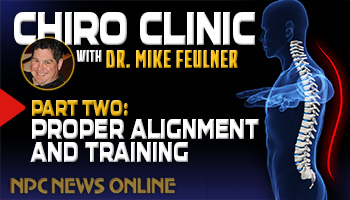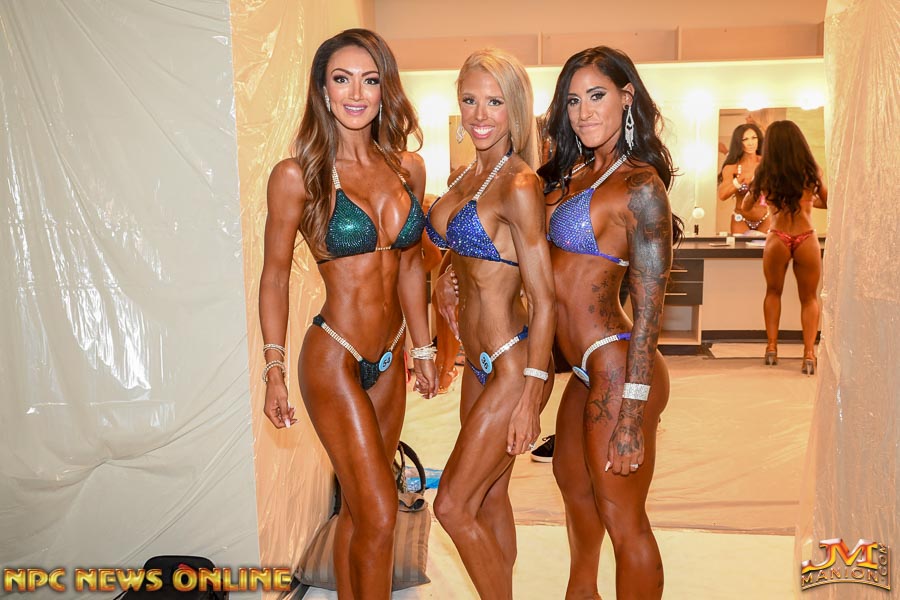By Mike Feulner, DC
Just one look around any gym can make you cringe at all the different variations of bad form. People doing things that just seem to be begging for an injury. He is the question you have to ask though; how much of what you see is being caused by improper alignment, as opposed to “operator malfunction.”
What do I mean by that? If it it because you simply don’t know what you’re doing, that is operator malfunction. But if it is one or more of your joints not moving truly and pain free, which causes you to change your form, that can be attributed to improper alignment.
Think about it this way; your low back is locked up on the right side and it’s leg day. You know going in that squats are going to be a chore. As you descend, your hips are going to rotate to the right and you’ll feel it in your low back. As you come up, the pain will move to include your right knee and maybe even your ankle. The movement looked ugly and it felt even worse. Ok, now I know all of you who actually squat can relate to that example. But it doesn’t just have to be low back pain and squats – this applies to any joint in the body…shoulder, elbow, neck (vertebrae) and on and on.
This happens because the human body is designed to work like a finely oiled machine that uses a system of pulleys and levers to generate strength. This includes the muscles, tendons, ligaments and bones (for our purposes here). When one of these parts is out of whack, we notice a problem. The body attempts to keep everything in balance and stabilized. If you have a joint that is not moving smoothly (as in the example above) muscles around that joint will tighten to protect or “stabilize” that joint. This will obviously affect the next moving joint – the knee in our example by creating an uneven pull or torque on that joint.
Guess what happens then? You are correct – tissue around that joint starts to tighten … and so on.cThe other part to this equation is how all of this affects the non-effected side of the body. Well, as one side tightens up and distorts movement the opposite side is forced to compensate. This starts to create the same scenario on the other side.
So, how do you avoid this problem?
1 Get regular adjustments
A good chiropractor can check you and put all the pieces of the puzzle together to create a system of balance in your movement. Here’s an interesting little fact: Sometimes you will not feel the pain from a misalignment for 3-6 weeks. This means it is wreaking havoc for a sometime before you decide to address it. Regular adjustments will help to avoid this situation.
2 Get Rolfed
Rolfing frees up the adhesions in the fascia and allows for full muscle movement. This is important because you want the muscle to be able to stretch and contract fully. If the fascia is too tight (filled with adhesions) the muscle will not be allowed to stretch to its full length. The fascia surrounds the muscle, it is also interspersed throughout it as well. To generate the most power possible you need your muscle to be able to function full. Chiropractic and Rolfing are a powerful combination.
3 Stretch between sets
When you complete a set, the muscle is engorged with blood and warm – it is primed for movement. This is an ideal time to stretch. It will help to keep adhesions from forming and if done correctly will stretch the fascia. Immediately after completing your set, stretch and hold for 10 seconds. Immediately after the 10 seconds, flex the bodypart you are training for 10 seconds. This will force more blood into the muscle, helping it to expand in the newly stretched fascia as well as force nutrient-rich blood to feed the muscles.
Hopefully this helps as I know many of you out there can relate to this. To those of you with horrible form not caused by the above do yourself a favor and learn how to train!
ABOUT MICHAEL FEULNER
Michael Feulner earned his Doctorate of Chiropractic from the University of Bridgeport in 2003. A former All-American football player and national-level bodybuilder, he has developed training and nutritional protocols for athletes of all levels. Dr. Feulner serves as the head expeditor at National-level NPC contests and many IFBB Pro League competitions.






